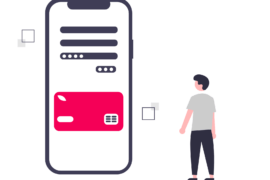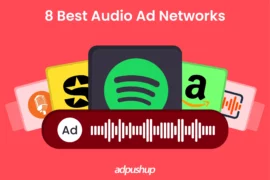In the last few months, ad tech has faced a lot of backlash regarding the methods used to collect user data for displaying ads.
Meanwhile, tracking prevention is ramping up, with Safari blocking third-party cookies and Chrome announcing that it will follow suit in two years. Publishers and advertisers are looking for better ways to collect and utilize user data for advertising without compromising privacy.
With or without cookies, bidstream data can be useful tool for advertisers to keep targeting relevant audiences and for publishers to monetize their audience at a better price. To understand all this, let’s start with the basics.
What is Bidstream Data?
All the data passed with a bid request is called bidstream data. It originates from the publisher’s website or app with basic details related to ad units like URL, device type, IP address, and ad format. None of the users’ PII (Personally Identifiable Information) is exchanged using bidstream.
Even if the advertiser doesn’t win the impression, the bidstream data will remain stored until deleted manually.
For targeting purpose, a publisher is likely to share the following data with advertisers in the form of bid request:
- Location (IP address, ZIP code)
- Device (type , model, screen size, CPU speed, OS, connection)
- Ad related data (publisher’s URL, ad unit size and format)
How can Bidstream Data be Used?
For advertisers, this is the easiest type of data to get from publishers. Consequently, buy-side uses this data to run personalized ads.
In that way it gives us a good sense of how efficient we can be for bidding in areas where there’s true scarcity.
Max Jaffe, GroupM’s programmatic practice lead
Using bidstream data, publishers are able to segment their audience for advertisers to analyze and better target them. Basically, the segmented and repackaged audience created by publishers is collected in the form of bidstream data on advertiser’s end. With well-defined segmentation, publishers have a better chance of selling their inventory to the highest bidder in exchange for better CTR and conversion.
Will it Work Without Third-party Cookies?
Yes, it will and can provide a possible solution to cookie blocking. Here is how.
New technology uses bidstream data in a way that circumvents the need to sync cookies with DSPs. Companies like LiveRamp, Epsilon, and Experian have deterministic IDs that use bidstream data to minimize use of third-party cookies.
On the other hand, publishers always have the right to use contextual targeting—targeting ads based on content. If a publisher uses contextual targeting and sends it in form of bidstream data, there shouldn’t be any concern related to cookies.

Is Bidstream Data Compliant with Privacy Standards?
This is where bidstream data faces a slippery slope.
As we have discussed before, bidstream data doesn’t take users’ PII values, saving it from scrutiny by most privacy laws (GDPR, CCPA, and more).
However, publishers should have user’s consent to show targeted ads. If this is not the case, then the publisher would be penalized. 71% US users understand why publishers must show ads for monetization purposes. But how many of these users would give consent to actually see ads?
Next, advertisers get access to bidstream data, even if they lose the impression. Then chances are they would try device fingerprinting to identify devices and their users. Many browsers like Safari and FireFox are against this practice and believe it invades user’s privacy.
What is the Future of Bidstream Data?
OpenRTB 3.0, released in November 2018, is a new framework for real-time auctions. And it offers some much needed upgrades to bidstream data.
The OpenRTB 3.0 bidstream also includes an open field for identity signals, which is used mainly for cookies and cookie-based IDs, but is designed to be flexible if new ID products gain adoption.
Richter, one of the leaders of the IAB’s OpenRTB working group
This could mean that bidstream data can still stand its ground in a world without third-party cookies.
FAQs
In a programmatic advertising ecosystem, bids are made in real time by ad buyers using information provided by the RTB (Real Time Bidding) model.
Bidstream data provides advertisers with insight into the most promising bidding areas by identifying site visitors based on their location. Following the identification of potential prospects, advertisers can focus more closely on who to target, and how.
Data from bidstreams can be useful for all parties involved in programmatic advertising or buying and selling ads. It helps bring together the sell-side and the buy-side in digital heaven. Using bidstream, publishers and advertisers can share all necessary and additional information, so everyone can win.

Shubham is a digital marketer with rich experience working in the advertisement technology industry. He has vast experience in the programmatic industry, driving business strategy and scaling functions including but not limited to growth and marketing, Operations, process optimization, and Sales.







